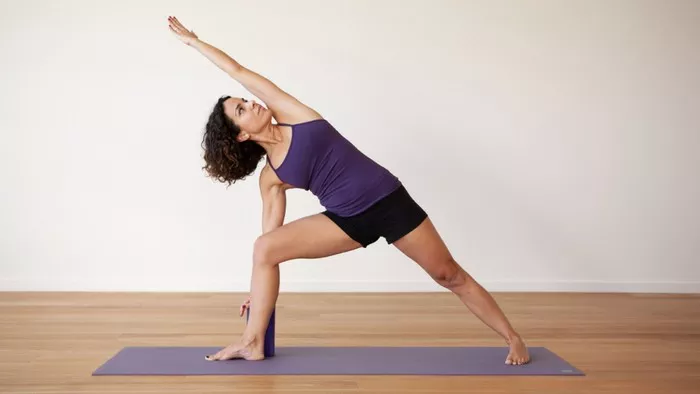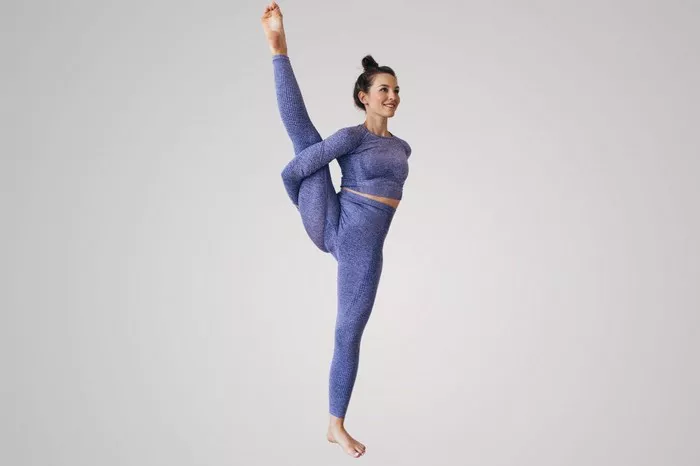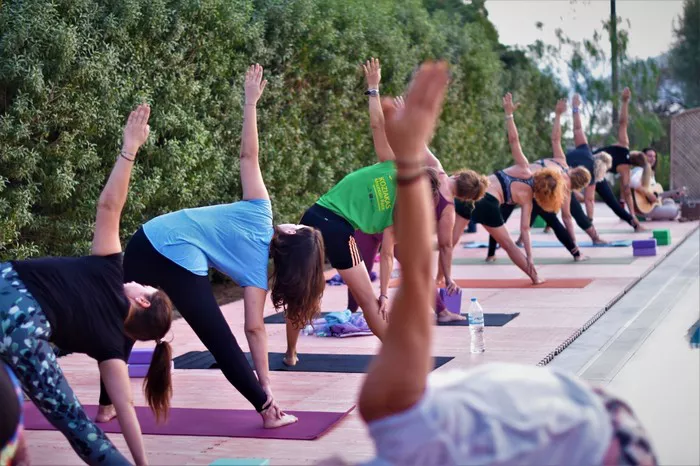In today’s fast-paced world, where stress and burnout are increasingly common, practices like Restorative Yin Yoga have emerged as essential tools for fostering physical, mental, and emotional well-being. Combining the grounding principles of Yin Yoga with the soothing benefits of restorative practices, this gentle yet transformative style offers a unique approach to self-care and healing.
Restorative Yin Yoga involves long-held, passive poses that target the deeper connective tissues, such as ligaments, fascia, and joints. Props like bolsters, blocks, and blankets are often used to provide support and comfort, making this practice accessible to all, regardless of flexibility or experience. By embracing stillness and deep relaxation, practitioners can tap into a range of holistic benefits. Below, we’ll explore these benefits in detail, focusing on how Restorative Yin Yoga nurtures the body, mind, and spirit.
1. Enhances Flexibility and Joint Health
Unlike more dynamic yoga styles that emphasize strength and movement, Restorative Yin targets the connective tissues. Holding poses for several minutes allows these tissues to stretch gently and safely, promoting flexibility and joint mobility over time. This slow and intentional stretching helps to release tightness, particularly in areas prone to stiffness, such as the hips, lower back, and shoulders.
Key benefits include:
- Increased range of motion.
- Improved joint lubrication, which can ease discomfort caused by stiffness or arthritis.
- Gradual release of built-up tension in connective tissues, reducing the risk of injuries.
By prioritizing gentle stretching, Restorative Yin encourages the body to open up naturally, without forcing or straining.
2. Calms the Nervous System
One of the most profound benefits of Restorative Yin is its impact on the nervous system. The practice activates the parasympathetic nervous system (PNS), often referred to as the “rest-and-digest” system. This shift away from the stress-inducing sympathetic nervous system (fight-or-flight) creates a state of deep relaxation and tranquility.
How it works:
- The use of props provides physical support, allowing the body to fully surrender.
- Slow, diaphragmatic breathing techniques, often incorporated in the practice, signal to the brain that it’s safe to relax.
- Long-held poses create a meditative atmosphere, fostering mental stillness.
This calming effect can lead to reduced anxiety, improved sleep quality, and greater resilience to daily stressors.
3. Supports Emotional Healing
In Restorative Yin, stillness becomes a mirror for self-awareness. As the body relaxes, the mind often begins to process unresolved emotions. This practice provides a safe and non-judgmental space to explore inner feelings, making it an effective tool for emotional healing.
Emotional benefits include:
- Release of pent-up emotions stored in the body, particularly in areas like the hips (often referred to as an “emotional storage center”).
- Increased self-compassion and mindfulness, as practitioners learn to observe their thoughts without judgment.
- Relief from emotional exhaustion or overwhelm.
By combining physical stillness with mental clarity, Restorative Yin encourages emotional balance and a deeper connection to oneself.
4. Improves Circulation and Detoxification
The long-held poses in Restorative Yin gently stimulate blood flow to specific areas of the body. This improved circulation helps to nourish tissues and remove toxins, supporting overall vitality.
Physiological benefits include:
- Enhanced oxygenation of muscles and tissues.
- Gentle stimulation of the lymphatic system, which aids in detoxification.
- Regulation of blood pressure through relaxation and improved vascular health.
These effects make Restorative Yin particularly beneficial for individuals with sedentary lifestyles, as it counteracts the sluggishness caused by prolonged sitting or inactivity.
5. Reduces Chronic Pain
Restorative Yin Yoga can be a powerful ally for those living with chronic pain conditions such as fibromyalgia, arthritis, or lower back pain. By addressing both the physical and mental dimensions of pain, the practice offers a holistic approach to relief.
Key pain-relief mechanisms:
- Gentle stretching releases muscle tension and improves posture, which can alleviate strain on joints and nerves.
- Deep relaxation interrupts the cycle of chronic pain by calming the nervous system and reducing inflammation.
- Mindfulness techniques teach practitioners to reframe their relationship with pain, making it feel more manageable.
Over time, regular practice can reduce pain intensity and improve overall quality of life.
6. Encourages Mindfulness and Meditation
Restorative Yin naturally incorporates elements of mindfulness and meditation, as practitioners are encouraged to focus on their breath and sensations during poses. This integration fosters a meditative state that can enhance mental clarity and emotional resilience.
Mindfulness benefits include:
- Improved focus and concentration, as the mind learns to anchor itself in the present moment.
- Greater emotional regulation, reducing reactivity to stress and challenges.
- Enhanced self-awareness, leading to more intentional and mindful living.
Unlike traditional seated meditation, Restorative Yin allows individuals to access mindfulness in a more embodied way, making it an excellent option for those who struggle with stillness in a seated position.
7. Boosts Energy Levels
While Restorative Yin is inherently relaxing, it also has an energizing effect on the body and mind. By releasing physical tension and mental stress, the practice creates space for renewed vitality.
Energy-boosting mechanisms:
- Improved circulation and oxygenation rejuvenate tired muscles and tissues.
- Emotional release clears mental clutter, leaving practitioners feeling lighter and more focused.
- Restorative poses often target the meridians (energy pathways) of the body, helping to balance chi or prana (life force energy).
This balance between relaxation and revitalization makes Restorative Yin an effective remedy for fatigue and burnout.
8. Cultivates Patience and Acceptance
In a world that often prioritizes speed and productivity, Restorative Yin teaches the value of slowing down. The practice requires patience, as poses are held for several minutes without the distraction of constant movement. This stillness fosters a sense of acceptance—both of the body’s limitations and of life’s natural rhythms.
Personal growth benefits include:
- Greater tolerance for discomfort, both physical and emotional, as practitioners learn to sit with sensations without reacting.
- Increased self-compassion, as the practice emphasizes listening to the body’s needs.
- A deeper appreciation for the present moment, reducing the urge to rush through life.
By cultivating these qualities, Restorative Yin becomes more than just a physical practice—it becomes a tool for personal transformation.
9. Accessible to All Levels
One of the most appealing aspects of Restorative Yin Yoga is its accessibility. The use of props allows individuals of all ages, body types, and fitness levels to participate. Whether you’re recovering from an injury, managing a chronic condition, or simply seeking a gentle practice, Restorative Yin can be tailored to meet your needs.
Adaptability includes:
- Modifications to accommodate limited mobility or flexibility.
- A focus on comfort, ensuring that the practice feels supportive rather than challenging.
- The ability to practice at home with minimal equipment, making it easy to integrate into daily life.
This inclusivity makes Restorative Yin an ideal choice for beginners and seasoned yogis alike.
10. Strengthens the Mind-Body Connection
At its core, Restorative Yin Yoga emphasizes the intimate relationship between the mind and body. By bringing awareness to physical sensations, breath patterns, and emotional states, practitioners develop a deeper understanding of how these elements interact.
Mind-body benefits include:
- Enhanced ability to recognize and address physical or emotional imbalances.
- A greater sense of alignment between thoughts, feelings, and actions.
- Increased intuition and trust in the body’s innate wisdom.
This strengthened connection can lead to a more harmonious and fulfilling life, as practitioners learn to navigate challenges with greater ease and self-awareness.
Conclusion
Restorative Yin Yoga offers a wealth of benefits that extend far beyond the yoga mat. From enhancing flexibility and reducing stress to promoting emotional healing and boosting energy, this practice is a holistic antidote to the demands of modern life. Its gentle, supportive nature makes it accessible to everyone, regardless of experience or physical ability.
Whether you’re seeking physical relief, emotional balance, or a deeper sense of connection, Restorative Yin provides a sanctuary where you can slow down, breathe, and reconnect with yourself. By integrating this practice into your routine, you can cultivate a state of inner calm and resilience that supports your overall well-being.
Related Topics:


















